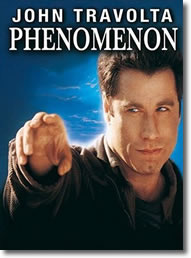The Human(izing) Christ of Film
Of the various ways Christians encounter Jesus at Christmas, each is undeniably rooted in his tangibility, in his manifestation and incarnation. His presence in the creche is not generally taken as some metaphor, but rather as that of a quivering newborn, touchable beyond reasonable argumentation. We place him within a previously unoccupied manger and turn our attentions fully to that manger, singing,
God from God, and Light from Light, comes with mercies infinite,
From high heaven he comes to earth, one with us in human birth.[1]
From the perspective of the pew on Christmas Eve and through Epiphany, the mystery of incarnation is well balanced — the human, the divine, and the fact of those two natures inextricably bound as information intended to startle the world from now on.
Yet so often we lose this balance, this sense of perspective. The Church’s default position seems to be to divinize the human Jesus, which is something it does increasingly these days at great peril and cost to itself and the purposes for which it was established; for when Jesus loses his humanity, we lose not only the meaning of his life but also of his birth and death, and of his life beyond death. The sidebar observations of Paul, writing to the Corinthians, become our accidental motto: “Even though we once knew Christ from a human point of view, we know him no longer in that way.”
Fortunately, correctives abound. As a medium, film has taken certain pains over the years to remind us that Jesus was a person. Sometimes these points are made in veiled or even unintentional ways, and sometimes they’re set before us like billboards. Sometimes they make their points by showing us Jesus in first century Palestine; sometimes they direct our attentions to other characters and times. Here are three examples that range the spectrum.
The Fastball: The Last Temptation of Christ
If you want a strongly caffeinated reminder of Jesus’ humanity, throw The Last Temptation of Christ (1988) into your Netflix queue. Directed by Martin Scorcese, and inspired by the searing original text of Nikos Kazantzakis’s unforgettable book, the movie’s a powerful challenge and admonishment, daring us to forget that the Jesus who hung on the cross was a human being subject to temptations.
Part of what works so well here is Scorcese’s willingness to implicate himself in the frailty of human longing. He provides the voice of a lion during the desert temptation scenes. The lion is the heart of Jesus himself, which, Scorsese intones, “is so hungry. It [Jesus’ heart] pretends to be humble but it secretly wants to conquer the world.”
What human being hasn’t had similar thoughts? Really, who among us regularly turns away from the temptation to power? Besides, would not a person of divine origin, as in the half-human, half-gods of ancient Greece, aspire to control as many things as possible?
The chief problem experienced by The Last Temptation was, and remains still, the insubstantial controversy it engenders. Folks still want to argue over its historicity, while the people responsible for it maintain, as they always have, that it’s not about veracity, but rather a higher view of Christ. Besides, what does it serve to argue about the truth contained by a poem?
At any rate, the film still retains its artistic integrity. If it’s true that Jesus was both fully human and fully divine, no honest moviewatcher will be able to deny the force of the argument as it’s presented here. The man was a man.
 The Curveball: Phenomenon
The Curveball: Phenomenon
In cinema, there are many Christ-like characters—human beings who do something according to the inherited narrative of the faith. Mostly when we talk about or think of these characters, we imagine the ones who sacrifice themselves for the greater good, or who willingly give up themselves because they realize they’re meant to do so, or because of love for another individual.
This, of course, is but one section—a terribly important section, yes, but one piece nevertheless—of the Jesus Event as we understand it. So far as I’m aware, though, only a very few films have taken the less-traveled tack and really dared to see it from the other way ‘round: that is, rather than assuming self-sacrifice, what exactly was it that got Jesus killed? This is the territory that the John Travolta picture Phenomenon (1996) wades into.
It does so by divinizing one who is totally, boringly normal and human. Travolta’s George Malley gets struck by heavenly lightning in a kismet-y moment in the first act, empowering him to gain abnormal leaps of ability in terms of both his brain activity and his connection to the world around him. Sensing these connections, and dipping into them through playful moments, he is at first a metaphysical flirt— that is, someone gifted enough to see past the usual bull of everyday life and into the gorgeous God-wrought subtext with which the universe thrums.
But then he has to go and tell people about it, and that, of course, is when he becomes a Christ figure. (There’s even a Last Supper involving an apple, two kids, and a horse.) It isn’t really the gift of insight he possesses that turns his normally sanguine small-town neighbors into pitchfork-wielding headhunters; it’s the fact that he is so moved by what he now knows and sees that he’s incapable of just keeping it to himself. And because what he’s espousing sounds like the cockamamie ramblings of a guy suddenly gone all New Age, he’s shunted out of his society and made cross fodder.
For those who’ve read the prophets and gospels, Phenomenon will play out with a sense of grotesque inevitability: it’s easier to persecute than it is to listen; it’s easier to appropriate others’ gifts than to be challenged to use one’s own. And as George’s humanity is gradually overtaken by the marks of fast-encroaching divinity, we see that remaining human for long isn’t in the cards.
The Subtle Underhand Throw: Wall-E
It may perhaps be a strange and indirect set of cinematic circumstances that turn a robotic being into a humanizing Christ figure. However, Wall-E (2008), already largely agreed upon as being one of the masterworks of animation, is indeed a strange and indirect project.
Take into evidence the circuitous nature of the plot: to find love, a robot (Waste Allocation Load Lifter Earth-Class, or Wall-E) must toil seven hundred years on the wasted face of our planet long after it’s left for dead by humans. Wall-E’s vocation is the endless compaction of human leavings, but his avocation is accumulating and puzzling over and just plain loving human culture. The geniuses over at Pixar seem content to let all this happen without dialogue or comment for an intensely long stretch, and the results are emotionally pleasing, even if we’re left wondering what they’re all about.
Then Wall-E is joined by EVE (Extraterrestrial Vegetation Evaluator), a probe droid sent to Earth by a human space colony to see if the planet might possibly host life again. By the time EVE’s mission is complete and she’s on her way back to deepest space to report in with a plant she’s found (evidence of a life-sustaining planet), Wall-E, with all his quirks, has totally fallen in love with her.
On board the mammoth ship, however, the humans have become virtually inhuman. Years of lavish life spent at zero-gravity have turned them into freakish, obese lumps, and for the most part they seem perfectly content to stay that way.
As it turns out, then, Wall-E and EVE become the bearers of life; in their own way, they’re more human than those who would account themselves homo sapiens. And naturally there are those who prefer the cushy life of the ship—those who would wish to put a stop to returning to Earth, which leads to a clear choice Wall-E must make to sacrifice himself in order for the truth to be propounded.
Although a robot, Wall-E becomes a lot like a person: a person who then, by bumbling chance, evinces the divine will for humans to go home and to live as they were intended to live.
[1] “Sing, O sing, this blessed morn,” The Hymnal 1982.
Copyright © 2008 Torey Lightcap.